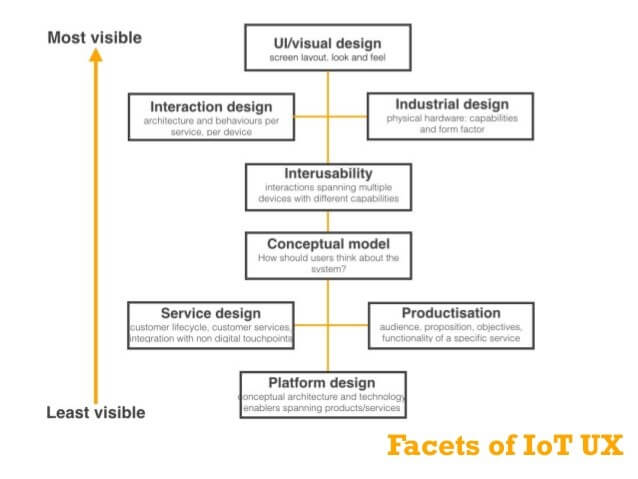Interusability: IoT User Experience Beyond The Level Of A Single Device
In 2014, publisher and technology guru Tim O’Reilly gave a speech entitled “Software Above the Level of an Individual Device.” In it, he described the foundational pattern that IoT enables: instead of individual computers, we’re building a network of devices that “make it possible to completely rethink how we organize work, play and society itself.”
Implicit in O’Reilly’s argument is the need for new ways of interfacing with these device networks to unlock their potential: What we need are user experiences that go beyond the level of a single device.
This multi-device experience design is called interusability, and it is central to building successful IoT products.
What Is Interusability?
The term “interusability” was coined in 2005 by Charles Denis and Laurent Karsenty. They argued that conventional UX design was ill-equipped to handle multi-device interfaces. The discussion continued in 2010 when a group of researchers published a practical framework for interusability. In 2015, O’Reilly Media launched Designing Connected Products, which we at SpinDance consider the current definitive work on the subject.
If you don’t have time for articles or books, Claire Rowland’s 49 slide presentation on the subject is worth checking out. In particular, this chart is a good guide for thinking about where interusability fits in the larger UX/software world:

So what is interusability? At SpinDance we sum it up this way:
Interusability is the process of creating a usable and enjoyable experience that spans multiple physical and digital interfaces.
Why Is Interusability Important In IoT?
IoT systems typically span multiple interfaces, some physical and some digital. Multiple interfaces increase the number of concepts a user needs to keep in their head, which can greatly complicate things.
A simple IoT enabled light bulb is a good example of this:
- A non-connected light bulb is trivial to use:
- Installation is just a matter of screwing it into the socket.
- Turning it on or off involves a simple switch.
- When it breaks, we figure it out by flicking the switch on or off a few times. Then we replace it with a new light bulb in a few minutes.
- A connected light bulb is much more involved:
- The installation often means downloading an app, provisioning the light on a wifi network, and sometimes creating an account.
- In addition to a simple switch, the light bulb now includes an app, and maybe a voice assistant like Alexa.
- When it breaks, you need to triage the light itself, your wifi network, and possibly the internet. If Alexa breaks, this compounds matters too.
In other words: a connected light bulb “experience” spans the device itself, the wifi network, the internet, the app, and possibly other third-party services and devices. The experience requires a level of abstract thinking that is non-trivial, especially for non-technical people.
The concepts get complicated by the fact IoT is relatively new and immature. Users need to relearn how things work, and often they’re learning difficult-to-use systems.
Interusability aims to solve, or at least simplify, these challenges for the user. It does this by trying to simplify the users and help the user be successful. Ideally, it makes the overall experience more enjoyable and pleasant.
Getting Started With Interusability
IoT is still young, and we still have a lot to learn about how to make awesome experiences for users. SpinDance is still learning ourselves, but here’s some hard-fought advice that we’ve found helpful:
- Design for the whole experience – Instead of having separate teams designing the device and the digital interfaces, it’s critical to get all the principles in the same room.
- Use prototypes and proofs of concept to validate ideas – Low-fidelity and high-fidelity prototypes are helpful to gauge user interface issues and fix problems before they get to production.
- Focus on the onboarding experience, not just the daily usage experience – If the user can’t install your product, they can’t use your product. Take the time to get this step of the process right.
- Use defensive design – Any part of the IoT experience may fail: the physical product might break, the internet might go down, the app might crash. Use defensive design to ensure the user experience can handle all these situations. Many first-time IoT designers focus too much time on the “happy path” and ignore problems.
If you have any questions or ideas, we’d love to hear from you! Reach out at hello@spindance.com.